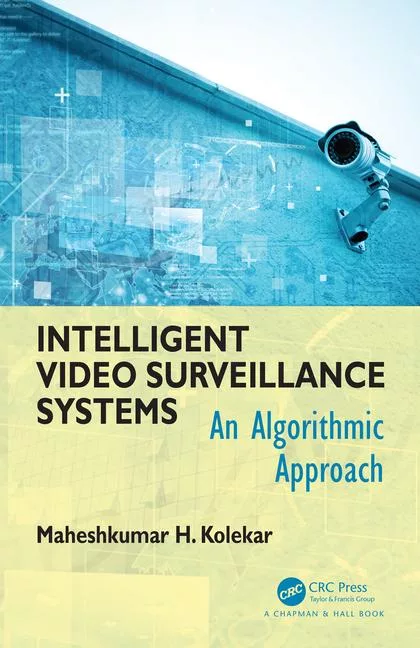From Bollards to Smart Video
Today such sites are targets of hijackers, disgruntled employees, angry outsiders, terrorists and criminals.
Facing escalating violence and more sophisticated attacks, it’s no wonder that airports and embassies continue to harden their perimeters and reinforce outside walls, windows, doors and driveways.
Responding to Threats
Beyond access cards and video surveillance at these facilities, it’s as common to find products and systems in place that resist bullets and blasts, stop car and truck bombers in their tracks and better search under authorized vehicles. These strategies also are spreading to facilities more recently threatened—utilities, national monuments, hospitals, highrises and corporate headquarters. No place is immune; no site is too far away from a potential assault.
One firm, CompuDyne Corp., Hanover, Md., is taking its expertise in corrections and public safety and applying it throughout government facilities and into business, too. Through its Norment Security Group, the firm offers numerous unique solutions in a family of Norshield Security Products.
Bullet-resistant Fiberglass
Take FiberShield bullet resistant fiberglass as one example. The product is a multiple-ply ballistic fiberglass laminate produced from ballastic fiberglass and impregnated with thermostat polyester resin binder. The multi-ply construction creates a delamination effect when ballistically attacked. Bullets imbed within its plies rather than ricocheting, which could happen with steel or aluminum. It comes in 3’ x 8”- and 4’ x 8” sheets. It’s used in judges’ benches, corporate entries, CEO offices, cash rooms, stores and police stations.
The Norshield line also includes an expanding array of bollards and barriers for vehicular access control. Depending on the site, there are fixed and removable bollard systems. The fixed type provides permanent denial of vehicle access while the removable type allows a facility to change vehicle access situations. There are retractable bollards, too, in semi-automatic and automatic operation. For office buildings, driveways, parking lots, banks and traffic lanes. The automatic systems are best suited to locations where access opens and closes many times a day. Control devices here vary: keypad, card key manual, computer and timers. The semiautomatic bollards also come in Department of State approved high security models.
Variety of Barriers
On the barrier side, there are high security cable crash beams, wedge barriers and cantilever gates. The wedge barriers can cover a standard road and there is even a portable unit.Cutting edge electronic security also plays a mighty role in protecting access to airports and embassies. One case in point: adaptive vehicle identification systems from Computer Recognition Systems Cambridge, Mass., has technology which recognizes license plates on-the-fly and linked to
a sophisticated database with driver photos, weight of the vehicle and even undercarriage scanning.
The firm developed algorithms to automatically identify, screen and clear vehicles in seconds. The system can process moving
vehicles at facility entrance speeds to deal efficiently with the requirements of security, parking and traffic control.
Computer-based License Plate ID
The systems work in concert with other security and control equipment in the facility or complex. Other applications have included tolling, speed, red light, pollution, and CVO enforcement, parking, access control, borders, city and facility security, travel time, to name a few.Capabilities include: authentication of commercial vehicles and repeat, registered visitors, at the entrance and exit, and during presence, of any governmental, commercial, or industrial complex, and at ports and borders; real-time monitoring and control of vehicles in more restricted (e.g., administrative buildings, research facilities, runways, etc.) and sensitive areas.
The firm says it’s the only vehicle identification system currently in use by the government. In partnership with Johnson Security, the company’s system, called AVISTA, currently protects an unnamed government installation against unwanted and unauthorized vehicle entry.
Of course, more traditional outdoor intrusion detection systems are seeing increased buyer interest as well as technology advances.
Ottawa, Canada-based Senstar-Stellar Corp., for example, just added new features to its IntelliFIBER fence intrusion detection product line. IntelliFIBER is an optical disturbance sensor for outdoor, fence-mounted security applications. IntelliFIBER’s optical sensor cable is extremely versatile and can be applied to virtually any fence. The system retains the industry leading performance, proven nuisance alarm rejection and exceptional detection characteristics of Senstar-Stellar’s Intelli-FLEX digital processor, while adding enhanced EMI, RFI and lightning protection.
IntelliFIBER is unique in the perimeter sensor industry because, unlike competitive systems, its sensor cable is jacketed in UV-resistant material and requires no conduit for installation.
The sensor cable consists of two fiber cores for detection of intrusions only. Communications and power are delivered on other cables typically installed in a trench or tied separately to the fence in conduit. IntelliFIBER allows zone lengths of up to 2000 meters (6500 ft).
The firm has added a 4-core fiber version with integrated power cabling, known as the 4+2 configuration, for detection, communications and power distribution all on the same cable.
Looking for a reprint of this article?
From high-res PDFs to custom plaques, order your copy today!







